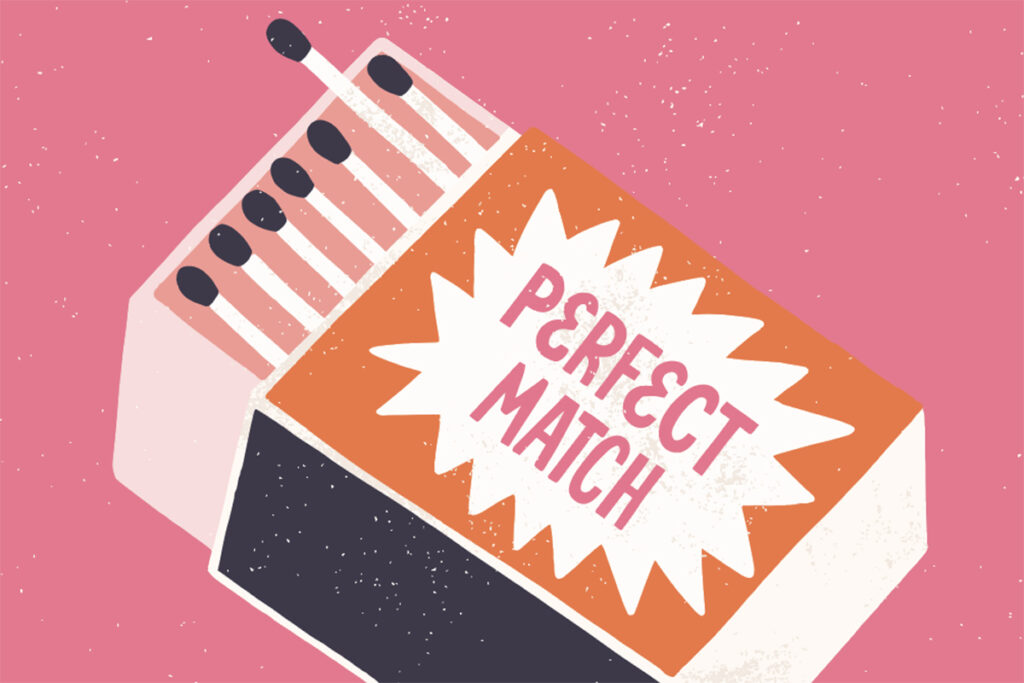Is it true that opposites attract? What makes relationships work? How can we find the best potential match?
Sean Prall, an assistant professor of anthropology at the University of Missouri, is close to answering those questions. He’s been observing and studying the behavior of Himba, a group of semi-nomadic agro-pastoralists in northwest Namibia, for five years now. With his research partner Brooke Scelza, professor of anthropology at UCLA, he’s conducted extensive interviews with the Himba people about the desirability of others in their community. Prall has found that when members of the tribe rated each other based on a photo, people with similar “ratings” found each other more desirable, showing that people often gravitate toward finding mates with the same “rating”—or level of desirability.
Drawing on those answers, Prall and Scelza estimated people’s “mate value,” a broad term they use to describe how likely it is that one person wants to be in a relationship with another.
Through their studies, they’ve discovered that, generally, people with similar mate values are more likely to begin a relationship with each other and that they also have better outcomes in those relationships than others.
Prall’s research is unique because it focuses on people’s direct actions and less on their stated preferences, which are often influenced by social and cultural pressures. Prall’s findings provide valuable new insight into how humans pick their mates and how relationships can be successful, he says.
We talked to Prall about his studies of the Himba people, mate value and how partner preferences can be applied more broadly to help inform how we choose our own romantic connections.
Why did you focus on the Himba people for your behavioral studies? This is a place where they practice polygyny and they also practice what we call concurrency, which means that basically every man and woman, married or unmarried, has partners on the side. So it’s sort of an interesting place to think about mating and reproductive decisions because people are making lots of decisions—they’re choosing boyfriends and girlfriends, choosing spouses, getting divorced or remarried. It makes it a good place to study how culture, biology and behavior sort of collide together.
You came up with the term “mate value.” Could you talk about what that is? Mate value really comes from something called biological market theory, which, in this case, is basically supply and demand in terms of choosing partners or mates.
People who are more desirable leverage more “value” on the mating market. Therefore, they can choose higher-quality partners or have more options for partners, relative to people who are sort of lower quality in the mating market. Basically, mate value refers to how desirable one is relative to others in a given local mating market. And I don’t mean desirability in terms of physical attractiveness. I mean desirability in terms of how much people want to partner with you.
In your research, you talk about focusing on people’s actions rather than their preferences. What do actions look like in both the Himba people and in our own culture? We looked at preferences and we also looked at real-world relationships in the Himba community. We were able to get measures of these different relationships and then looked at how the mate value differences impacted these relationships.
People who have similar mate values tend to have longer relationships. If you are in a relationship that’s sort of discordant—say, you have a much higher mate value than your partner—then you might be dissatisfied in your relationship and look for others who are of higher quality than your partner.
We were able to actually move beyond just the preference data and look at how mate value matters in the context of real-world relationships. I think this is something that illustrates a larger feature of human mating. We have what we call “aspirational preferences,” where we prefer people of high desirability, but we tend to pair up with people of similar desirability, and that’s because we operate in a competitive environment where we’re competing with other individuals for access to mates.
What do you see for the broader context in how we use this information to choose our partners? This [Himba] way is how people have been mating and pairing up for thousands and thousands of years. From an evolutionary perspective, people have not been pairing up through Tinder or dating websites, right? We pair up with people in our community, people that we know. We leverage the information we gather about individuals in our community and evaluate people in that way. This research gives a more detailed look at how humans form partnerships.





